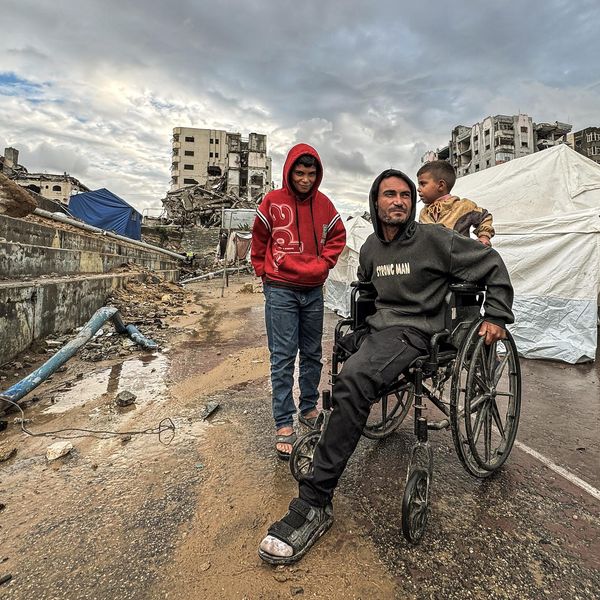A forever war seems to be brewing in Ukraine.
Last week, I argued that given the failure of Kyiv’s summer offensive to reclaim significant territory from Russia and given the maximalist rhetoric that the U.S. government and NATO allies had been using since last year to sell the public on open-ended military support, the war in Ukraine was in danger of being prolonged again, well past the date that the Biden administration had appeared to set last year.
This increasingly looks to be the case. On Saturday, the Financial Times reported that “U.S. officials are privately girding for what increasingly looks like a war of attrition that will last well into next year,” echoing an earlier Wall Street Journal report that “military strategists and policymakers across the West are already starting to think about next year’s spring offensive” and about “how to prepare for a protracted conflict.”
It may well become “a protracted struggle that lasts several more years,” the Journal warned on Sunday, noting that Ukraine’s goal of retaking all the territory it lost now “appears a distant prospect.”
Writing in POLITICO, former Democratic congressman and Obama administration State Department official Tom Malinowski — now a senior fellow at the McCain Institute — argues that “for the war in Ukraine to end on terms consistent with American interests and ideals, Ukraine must be seen to have won, and Russia’s invasion must go down in history as a decisive failure.”
In particular, Malinowski points to President Joe Biden’s declaration in February this year that “Ukraine will never be a victory for Russia — never.”
On Aug. 10, an unnamed senior official told CNN that “we don’t know how much longer this war is going to go on,” but that the White House “won’t be bashful about going back to Congress beyond the first quarter of next year if we feel like we need to do that.”
In other words, the United States and NATO are moving the goalposts again in a war that has already been characterized by steady mission creep. At least some of their Russian counterparts appear to feel the same, with former Russian President and Deputy Security Council Chairman Dmitry Medvedev recently saying that “should it take years or even decades, then so be it.”
Yet this begs the question of when it will ever be considered a good time to wind down the war. The Ukrainian government and its supporters maintain that it’s a lack of advanced military weapons that have hobbled its offensive, even as military experts insist no weapon would be a “magic bullet” against the dug-in Russian defenses and that the reasons for Kyiv’s military failures run deeper. This is not an unreasonable take given the significant amount of Western-supplied heavy weaponry destroyed in the offensive’s opening weeks alone.
If the next offensive similarly fails, will a ceasefire be pushed back again? How many years might this go on for?
Even if Kyiv does stage a successful operation against Russian forces in the future, it’s not clear it will lead to an end of the war. For one, Moscow may decide to launch its own counter-offensive to erase whatever gains Ukrainian forces have made, starting perhaps an endless cycle of military toing-and-froing. Or we could have a repeat of last fall, when Kyiv and its NATO backers, emboldened by the major gains made in Ukraine’s September counter-offensive, rejected the idea of talks to insead pursue “total victory,” at ultimately disastrous cost.
Even now, Ukrainian leaders and many of its Western supporters still maintain the maximalist goals of restoring the country’s pre-2014 borders, which includes retaking Crimea.
Ironically, a prolonged war is exactly what at least some NATO officials had hoped for from the start in order to trap Russia in its own Afghanistan-like blunder, with the New York Times reporting in March 2022 that the administration “seeks to help Ukraine lock Russia in a quagmire.”
But a prolonged war will not be good for Ukraine, which has already suffered breathtakingly vast human and economic costs from a protracted war, and which falls further and further into debt with every month. And it will not be good for the rest of the world either, feeding into worldwide cost-of-living shocks while carrying the already twice-averted possibility of a catastrophic NATO-Russia war that could turn nuclear.
Meanwhile, should the war drag on into next year, it may become a sore political issue in the 2024 election. President Biden came into office promising an end to “forever wars” and to launch a new era of “relentless diplomacy,” while his likely opponent, Donald Trump, has staked out a pro-diplomacy position on the war, making a protracted war in Ukraine a potential political liability.
Meanwhile, as the U.S. public and Republican lawmakers increasingly sour on more military aid to Ukraine, the president risks having U.S. involvement in the war end not on his terms, but with Congress cutting off further funding. All the while, there is the unpredictability of war policy during the campaign season, potentially raising pressure on the administration to escalate Washington’s involvement, lest a perceived defeat threaten Biden’s chances for re-election.
Even U.S. officials are now quietly admitting that Joint Chiefs Chair Gen. Mark Milley “had a point” when he called for Kyiv to make the most of its gains by suing for peace late last year, and that “we may have missed a window to push for earlier talks.” Now may not be too late to do so.
But if the administration continues to drag its feet, it risks trapping not just Russia but the United States and Europe into yet another endless conflict, guaranteeing ongoing horror for the Ukrainian people and keeping the specter of nuclear catastrophe looming above the rest of the globe.
















